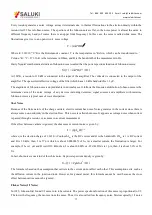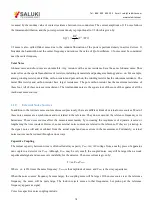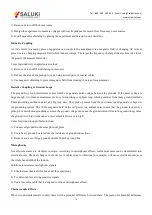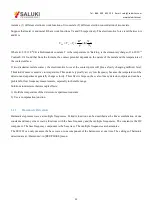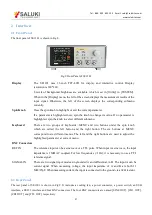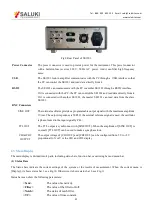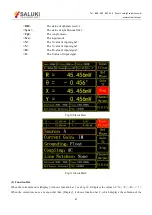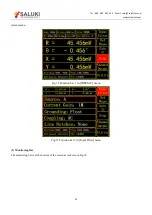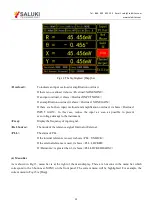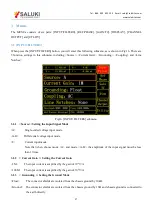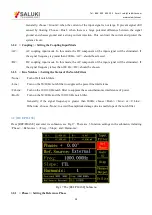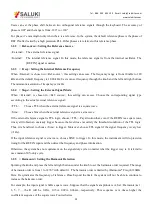
Tel: 886. 909 602 109 Email: sales@salukitec.com
www.salukitec.com
14
influence.
The dynamic reserve of SE1201 is greater than 120dB. High dynamic reserve will increase output noise and drift. When
the dynamic reserve is high, output noise will be increased due to the A/D converter. There is background noise at any
signal. When the signal is amplified by PSD, the output signal will contain noises. If the noise is very high, it will result
in large output noise. Otherwise, if the external noise is very low, the output is mainly affected by the noise of SE1201.
Reducing dynamic reserve and DC gain can decrease the error. Therefore, low dynamic reserve should be chosen firstly
in actual application.
In fact, the minimum reserve changes with the sensitivity (gain) of the instrument. At high gains, the minimum dynamic
reserve increases with the increase of the sensitivity. In analog lock-in amplifiers, low dynamic reserve means low output
error and drift. In SE1201, high dynamic reserve increases output noise, but not increases output error and drift.
However, if the gain of analog amplifier is high enough, the amplified intrinsic noise will be greater than the noise
generated by the A/D converter. In this case, increasing the analog gain cannot decrease the output noise. At high
sensitivity, decreasing the gain will increase the dynamic reserve.
1.8 Signal Input Amplifier and Filters
A lock-in amplifier can measure signals as small as a few nanovolts. The gain of the low noise signal amplifier should be
large enough so that the output signal can be digitized by the A/D converter without degrading the signal to noise ratio
(SNR). The analog gain of the SE1201 ranges from roughly 7 to 1000 times. Higher gains do not improve the SNR.
The overall gain (AC plus DC) is determined by the sensitivity and the distribution of the gain is set by the dynamic
reserve.
Input Noise
In SE1201, the input noise is about
Hz
nVrm
/
10
. If an amplifier has
Hz
nVrm
/
10
of input noise and a gain of
1000, the output will have
Hz
Vrm
/
10
of noise. Suppose the output of the amplifier is low-pass filtered by a single
RC filter (6 dB/oct rolloff) with 100ms time constant.
Input noise of lock-in amplifier and Johnson noise of resistors are both Gaussian in nature. That is to say, the amplitude of
noise is proportional to the square root of the noise bandwidth. A single-stage RC filter has an ENBW of 1/4T where T is
the time constant (R
×
C) which means that Gaussian noise is filtered with an effective bandwidth equal to ENBW. In this
case, the filter sees
Hz
Vrm
/
10
of input noise and has an ENBW of 1/(4x100ms) or 2.5 Hz. The voltage noise at
the filter output will be
Hz
Hz
Vrm
5
.
2
/
10
or 15.8 μVrms.
For Gaussian noise, the peak-peak noise is about 5 times the rms noise. Thus, the output noise will be about 79μVrms.
Input noise works in the same way. For sensitivities below 5μV, the value of input noise determines the output noise.
ENBW depends on the time constant and filter roll off. For example, suppose the SE1201 is set to <5 μV> full scale, <100
ms> time constant and <6dB/oct> roll off. Thus, ENBW is 2.5 Hz. This leads to 7.9nVrms input noise. At the output, this

















